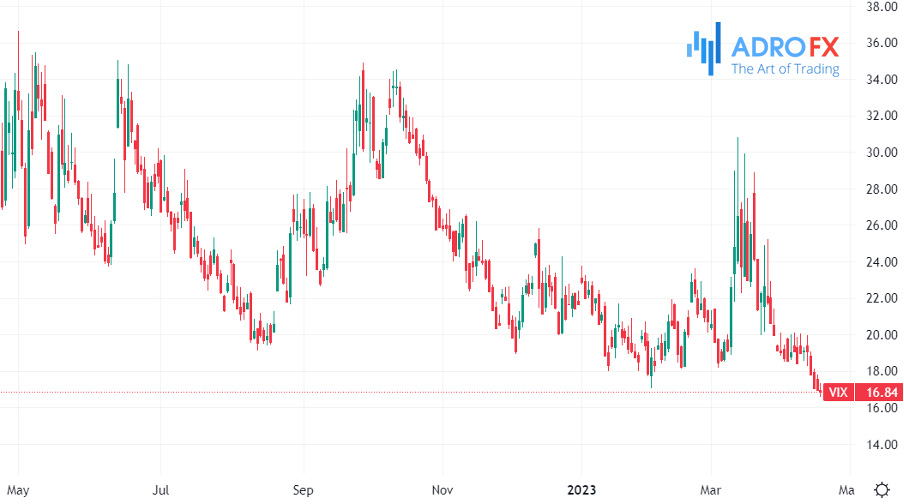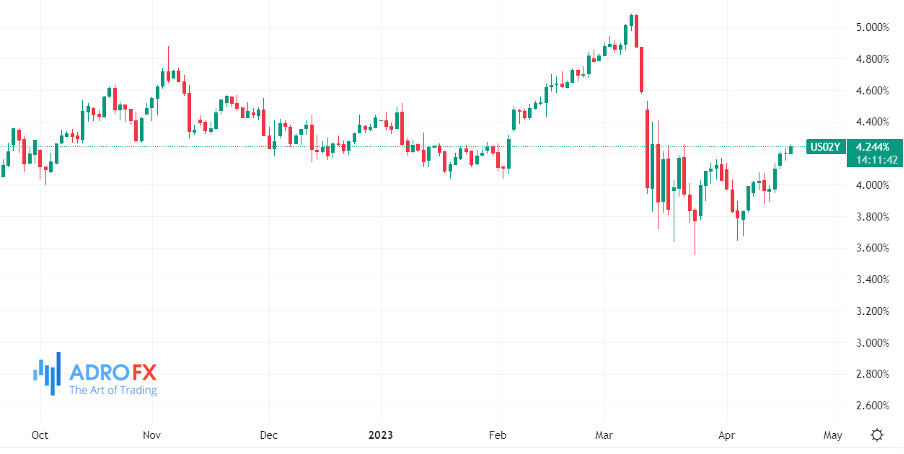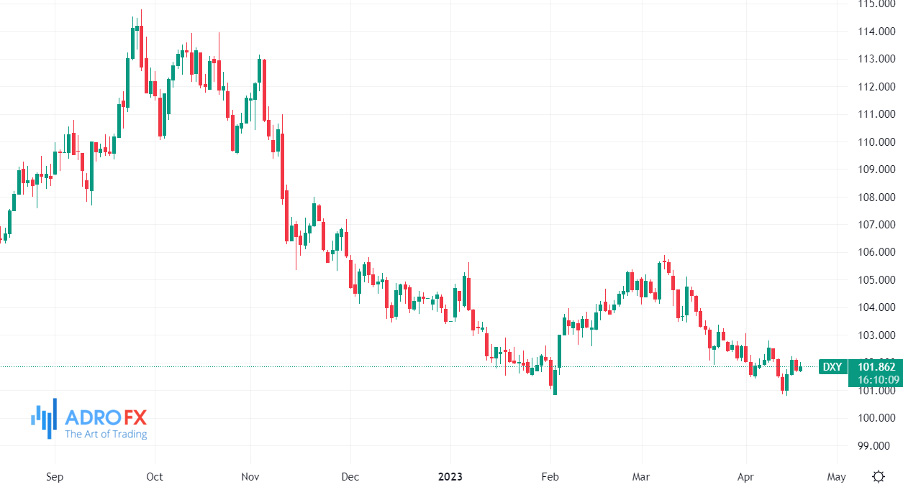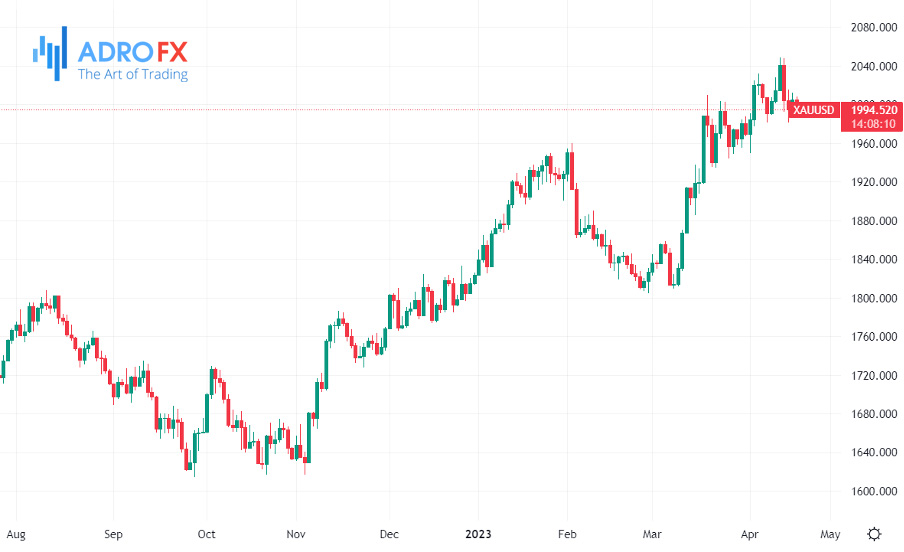Wall Street Holds Flat Amid Uncertainty Over Fed Interest Rates | Daily Market Analysis

Key events:
- UK – CPI (YoY) (Mar)
- Eurozone – CPI (YoY) (Mar)
- USA – Crude Oil Inventories
On Tuesday, Wall Street closed almost flat as investors evaluated statements from US Federal Reserve officials. While the CBOE Volatility Index (VIX) hit its lowest level since January 2022 at just under 17, stock prices failed to respond positively. This indicates that investors may be holding onto cash amid uncertainty surrounding the Federal Funds rate peak.

This week marks the acceleration of earnings season, with 60 S&P 500 companies expected to report by Friday. The first week of earnings season saw a positive trend, as 90% of reported names beat EPS estimates - the highest beat rate since at least 2012, according to Bank of America data. BAC was among the companies to report better-than-expected earnings this morning, following the trend set by other financial institutions last week. However, it is important to note that the industry turmoil did not hit until mid-March, meaning Q2 earnings may reflect any related weakness in business.

The US two-year Treasury yields rose to nearly a one-month high of 4.244% overnight and remained at around 4.21% during early European trading, indicating that Bullard's comments had a significant impact on the markets. As the Federal Reserve officials head towards their next meeting in May, they will closely monitor economic data. The release of the Beige Book later in the session could provide investors with more insight into the economic conditions across the country.

On Tuesday, the dollar weakened after data revealed that China's economy grew 4.5% YoY in Q1, a significant increase from the 2.9% recorded in the previous quarter, boosting risk sentiment. However, losses were limited due to two reasons - firstly, the YoY rise in China's GDP was coming off a low base, and secondly, the industrial data indicated a struggle in the manufacturing sector due to weak external demand.
EUR/USD fell by 0.1% to 1.0966, after increasing by 0.4% in the previous session, ahead of the final March inflation data release for the eurozone. The CPI is expected to rise by 0.9% on a monthly basis in March, indicating an annual increase of 6.9%, a decline from the previous month's 8.5%. However, the core CPI, which excludes volatile food and energy prices, is projected to rise by 5.7% YoY, surpassing the previous month's 5.6%. This suggests that the European Central Bank will continue its interest rate hikes in May.

GBP/USD rose by 0.1% to 1.2431, following the release of data on Wednesday, which revealed that the annual price rise rate slowed down less than expected in March, remaining high at an astounding 10.1%. The Bank of England's daunting task of controlling inflation has been supportive of the pound, which reached a 10-month high last week.
Gold prices were relatively stable in Asian trade on Wednesday as investors awaited further information on US monetary policy from upcoming Federal Reserve speeches and reports. Despite having risen above the $2,000 level on Tuesday as the dollar and US Treasury yields declined, the yellow metal was held back by growing uncertainty over the direction of US interest rates. Recent hawkish signals from Fed speakers had spooked markets, preventing gold from making further gains. Nevertheless, the price of gold remained relatively high due to concerns of a potential economic slowdown this year as the global economy feels the impact of high interest rates.

Hawkish comments from Federal Reserve officials, along with signs of resilience in the US economy, have increased fears that interest rates may rise more than expected. Many note that markets are now pricing in an 85% chance of a 25 basis point hike in May, followed by a 19% chance of a similar move in June. This is a significant shift from earlier market expectations, which had largely priced in a pause in the Fed's interest rate hikes. While rising interest rates generally bode poorly for gold and other metals, they have benefited from increased safe-haven demand amid fears that rising interest rates will hurt economic growth this year.









